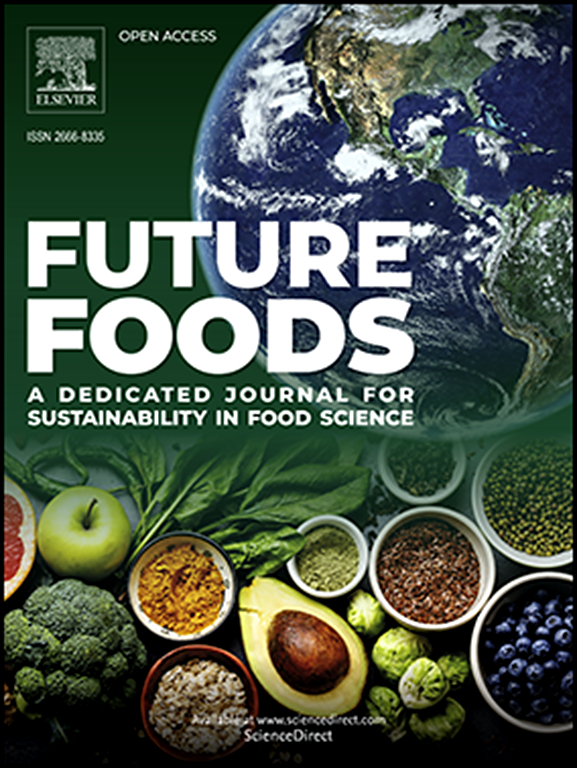Physical and functional characterization of whey protein-lignin biocomposite films for food packaging applications
IF 7.2
Q1 FOOD SCIENCE & TECHNOLOGY
引用次数: 0
Abstract
Whey protein isolate (WPI) and lignin are by-products of the cheese production and pulp and paper industries, respectively. The objective of this work was to analyze the physicochemical and mechanical properties of biodegradable films made from WPI (at different denaturation levels), glycerol, and lignin. WPI solutions were subjected to heat treatments at 60 °C, 90 °C, and a 1:1 mixture of 20 °C and 90 °C to induce varying levels of protein denaturation. Films produced at 90 °C, with 88.65 % protein denaturation, exhibited superior mechanical properties and lower water solubility compared to WPI films treated at lower temperatures. Adding lignin enhanced specific film properties: alkaline lignin increased glass transition temperature, opacity, UV blocking capacity, and antioxidant properties, while reducing flexibility. Conversely, lignosulfonate resulted in thicker films and improved UV shielding and antioxidant benefits. Microstructural analysis revealed that uneven lignin dispersion within the film matrix likely limited the overall lignin-induced enhancement of mechanical and barrier properties. These findings show that WPI-lignin films, especially those with optimized lignin dispersion, have potential as sustainable alternatives to conventional plastic packaging, providing improved UV protection, antioxidant properties, and mechanical strength. Further research is needed to enhance lignin integration techniques and assess the scalability of these films for industrial use.
求助全文
约1分钟内获得全文
求助全文
来源期刊

Future Foods
Agricultural and Biological Sciences-Food Science
CiteScore
8.60
自引率
0.00%
发文量
97
审稿时长
15 weeks
期刊介绍:
Future Foods is a specialized journal that is dedicated to tackling the challenges posed by climate change and the need for sustainability in the realm of food production. The journal recognizes the imperative to transform current food manufacturing and consumption practices to meet the dietary needs of a burgeoning global population while simultaneously curbing environmental degradation.
The mission of Future Foods is to disseminate research that aligns with the goal of fostering the development of innovative technologies and alternative food sources to establish more sustainable food systems. The journal is committed to publishing high-quality, peer-reviewed articles that contribute to the advancement of sustainable food practices.
Abstracting and indexing:
Scopus
Directory of Open Access Journals (DOAJ)
Emerging Sources Citation Index (ESCI)
SCImago Journal Rank (SJR)
SNIP
 求助内容:
求助内容: 应助结果提醒方式:
应助结果提醒方式:


